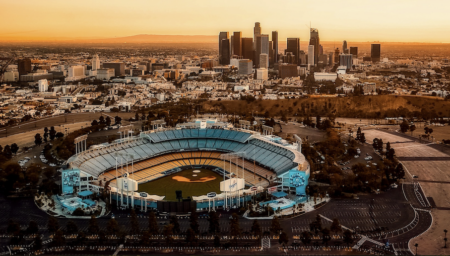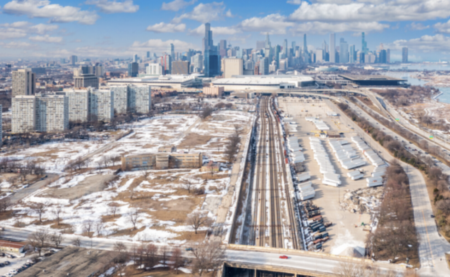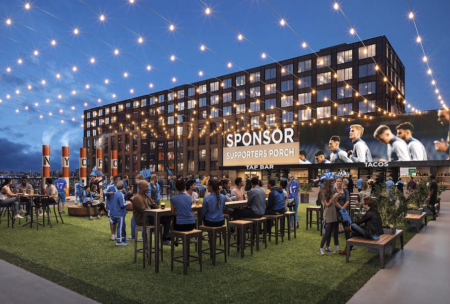Luton Town Football Club’s plans for a new stadium at Power Court and mixed-use development at Newlands Park were hailed at a global architectural awards ceremony in Cannes, France.
Manuel Nogueira from AndArchitects led a group from 2020 Developments (Luton) – the property arm of the Sky Bet League Two soccer club – including chief executive Gary Sweet and development director Michael Moran at MIPIM 2017, where the plans for a new stadium in the heart of Luton town center won an award in the Sports & Stadiums category of The Architectural Review Future Projects Awards.
The plans for the 17,500-22,500-capacity stadium on the derelict site of a former power station beat a strong field of competitors – with the new Perth Stadium in Western Australia and Power Court shortlisted.
In addition to that success, the plans for Newlands Park – a retail, office, leisure, conference center and hotel development planned for land adjacent to Junction 10 of the M1 highway – received a commendation in the Regeneration & Masterplanning category.
Architectural Review writes of Power Court: “This proposal is for a new 22,500-seater stadium alongside a major regeneration of the 20-acre site with a new river frontage, 550 apartments in eight buildings and 10,800m2 (116,250ft2) of bars, restaurants and retail. It will also incorporate an 1,800-capacity live venue, education and health facilities and a 3,000m2 (32,390ft2) food store plus 1,200 car parking spaces and a medium-size hotel. This is a key gateway to the town center but it has lain derelict for many years. The stadium for the local Luton football club will be delivered in tandem with major regeneration of the site. It sits on a raised podium which allows access to public and multi-use spaces including a new river frontage within an enhanced public space designed to complement a Grade I listed church.
“The masterplan allows the restoration of a currently hidden connection between the church and the River Lea. It also aims to deliver a pedestrian-focused scheme with raised public piazzas all accessible to the wider public. The scheme brings together cutting-edge architecture and engineering to transform a post-industrial site into a dynamic attraction, delivering new facilities to enhance the life of the town.”
Luton Town is currently awaiting the outcome of its two planning applications from Luton Borough Council, with just under 11,000 people supporting the club during a public consultation period in late 2016.




